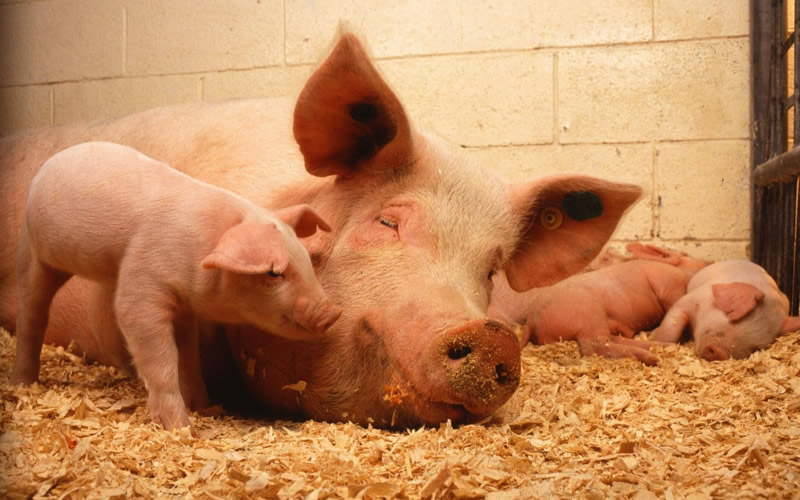
S.C. Encyclopedia | Pork has been important to the diet and economy of South Carolina since colonial times. Hogs were probably introduced to South Carolina in the sixteenth century by Spanish explorers. Indians acquired some of these animals, and English settlers purchased swine from the natives when they arrived at Charleston in 1670. Other animals were imported from Barbados, Virginia, and Bermuda. Settlers soon recognized the region’s favorable conditions for swine husbandry. Farmers allowed their stock to “range” or forage in local forests, subsisting on natural provender until collected at harvest time. In 1682 an observer noted “many thousand head” of swine were thriving around Charleston. More, in fact, than were needed to feed the colony. As early as the 1680s, South Carolinians were selling pork to other English colonies.
Settlers took hogs with them into the backcountry, and pork in its many forms became a cornerstone of the diet. Hog killing was an important ritual of rural life that endured well into the twentieth century. Animals were slaughtered in cold weather and the meat preserved by salting and smoking. Fresh pork was often barbecued, roasted slowly over hot coals. As the cotton boom swept South Carolina in the early nineteenth century, many farmers abandoned food crops for the white fiber. Pork production fell sharply in the 1850s, dropping by more than 100,000 head during the decade.
After the Civil War, acreage of field crops continued to increase, and stricter fencing laws confined animals to their owner’s property. The end of open-range husbandry enabled selective breeding and better veterinary care to improve livestock. South Carolina’s hog population settled at around 500,000 in the 1870s and remained stable, with minor fluctuations, for many years.
By the late twentieth century, hog farming had become a highly specialized and capital-intensive enterprise. However, large-scale swine production has unpleasant social and environmental consequences and has encountered opposition in host communities. Meanwhile, the economic importance of pork has steadily declined in South Carolina. Since 1981 hogs have fallen from fifth to eleventh place in value to the state’s agricultural economy. Compounding the woes of hog farmers, prices tend to follow a cycle ranging from boom to bust. Since the 1930s government has intervened to stabilize hog prices with varying degrees of success. The crash of hog prices in the late 1990s—prices fell from 60¢ to 15¢ a pound—was catastrophic for many South Carolina producers. At century’s end, South Carolina’s hog population fell below 250,000 head, the smallest since record keeping began in 1867.
– Excerpted from the entry by Eldred E. Prince, Jr. To read more about this or 2,000 other entries about South Carolina, check out The South Carolina Encyclopedia by USC Press. (Information used by permission.)



 We Can Do Better, South Carolina!
We Can Do Better, South Carolina!
























